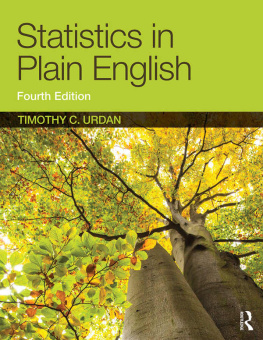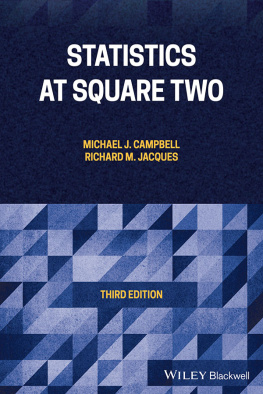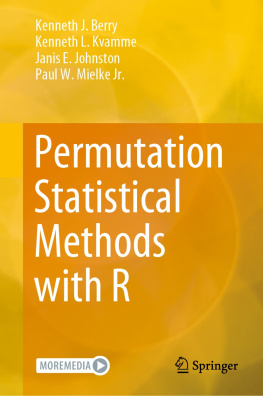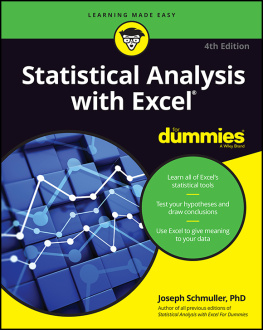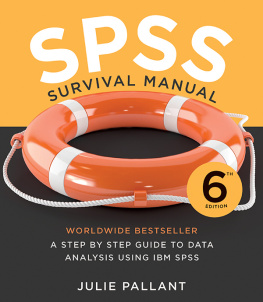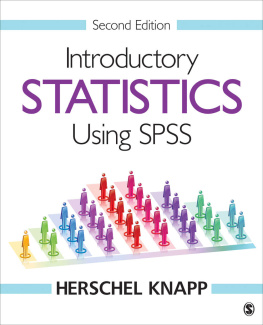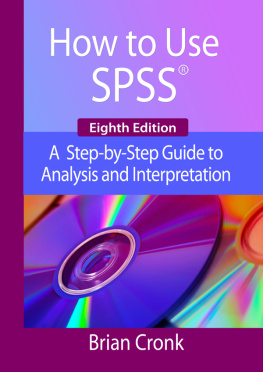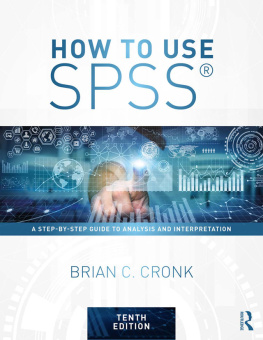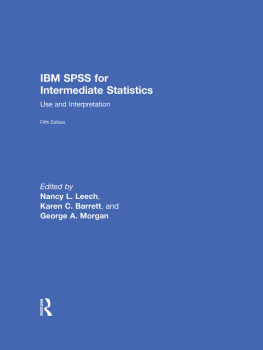Statistics in Plain English
This introductory textbook provides an inexpensive, brief overview of statistics to help readers gain a better understanding of how statistics work and how to interpret them correctly. Each chapter describes a different statistical technique, ranging from basic concepts like central tendency and describing distributions to more advanced concepts such as t tests, regression, repeated-measures ANOVA, and factor analysis. Each chapter begins with a short description of the statistic and when it should be used. This is followed by a more in-depth explanation of how the statistic works. Finally, each chapter ends with an example of the statistic in use, and a sample of how the results of analyses using the statistic might be written up for publication. A glossary of statistical terms and symbols is also included. Using the authors own data and examples from published research and the popular media, the book is a straightforward and accessible guide to statistics.
New features in the fourth edition include:
sets of work problems in each chapter with detailed solutions and additional problems online to help students test their understanding of the material;
new Worked Examples to walk students through how to calculate and interpret the statistics featured in each chapter;
new examples from the authors own data, published research, and the popular media to help students see how statistics are applied and written about in professional publications;
many more examples, tables, and charts to help students visualize key concepts, clarify concepts, and demonstrate how statistics are used in the real world;
a more logical flow, with correlation directly preceding regression, and a combined glossary appearing at the end of the book;
a Quick Guide to Statistics, Formulas, and Degrees of Freedom at the start of the book, plainly outlining each statistic and when students should use them;
greater emphasis on (and description of) effect size and confidence interval reporting, reflecting their growing importance in research across the social science disciplines;
an expanded website at www.routledge.com/cw/urdan with PowerPoint presentations, chapter summaries, a new test bank, interactive problems and detailed solutions to the texts work problems, chapter summaries, SPSS datasets for practice, links to useful tools and resources, and videos showing how to calculate statistics, how to calculate and interpret the appendices, and how to understand some of the more confusing tables of output produced by SPSS.
Statistics in Plain English, Fourth Edition is an ideal guide to statistics and research methods, for courses that use statistics taught at the undergraduate or graduate level, or as a reference tool for anyone interested in refreshing their memory on key statistical concepts. The research examples are from psychology, education, and other social and behavioral sciences.
Timothy C. Urdan is Professor of Psychology at Santa Clara University.
Urdans text provides exactly the right depth of information needed to understand statistical concepts from both a theoretical and practical perspective. His style of writing is extremely engaging and helpful as he balances his explanations of theory and analyses with many real world examples that help situate the practical application of the concepts and analyses.
Robyn Cooper, Drake University, USA
The book explains clearly many concepts in statistics and is written in an unintimidating and readable style. Both undergraduate and graduate students will find it helpful as an introduction to statistics.
Bridget Sheng, Western Illinois University, USA
This is a straight-forward and yet comprehensive treatment, providing students with a basic understanding of statistics in the social sciences without bogging them down with too many equations and complex examples.
Robert M. Bernard, Concordia University, USA
I know of no textbook on the market that even comes close to satisfying breadth of coverage/content readability/value for price point as does the Urdan text. My students continually tell me it is very helpful and easy to understand. The Website is a very useful tool Urdan writes very clearly and explains concepts at a level that is appropriate for multiple audiences, including undergraduate, graduate, and even academic audiences I like that Urdan uses a variety of examples as opposed to competing texts that limit their examples to specific disciplines.
Catherine A. Roster, University of New Mexico, USA
It is very clear and where ever possible uses normal, plain English.... Simple terms are preferred to jargon and where key terms are introduced they are done so clearly. The online support materials provide useful additional tools for both students and lecturers. From the examples used it seems to be aimed at a variety of social science students Psychology, Childhood and Youth and Crime Studies. I would like to use the book and would encourage students to do so. It contains a lot they need to know in order to understand statistical tests.
Nick Lund, Manchester Metropolitan University, UK
Problem sets ... [are] a welcome addition. The interactive analyses, podcasts, PowerPoints and test questions are all a positive. The author understands the material quite well and does a good job explaining terms and concepts. The pedagogical aids trump what exists currently for adoption.
Nicholas Corsaro, University of Cincinnati, USA
I really like the writing it up section. I think that adds a lot to what my students need in regards to statistics. This text will be purchased by people needing a baseline level of statistical knowledge. I enjoyed the text and writing style. The book would be beneficial to the students. Mr. Urdan does not attempt to take it too deep and keeps the book succinct enough to make it usable in a beginner stats class.
Andrew Tinsley, Eastern Kentucky University, USA
I am highly impressed with the latest edition (4th) of Tim Urdans wonderful text. This author continues to deliver a highly readable yet nuanced text on research methods and fundamental statistics. I use this book in a number of graduate courses for clinical psychology students. It would also serve advanced undergraduates. In addition to clear writing and covering all the basics, I believe another essential strength is the authors commitment to training minds for critical thinking.
Jamie K. Lilie, Argosy University, USA
Statistics in Plain English
Fourth Edition
Timothy C. Urdan

Fourth edition published 2017
by Routledge
711 Third Avenue, New York, NY 10017, USA
and by Routledge
2 Park Square, Milton Park, Abingdon, Oxon, OX14 4RN, UK
Routledge is an imprint of the Taylor & Francis Group, an Informa business
2017 Taylor & Francis
The right of Timothy C. Urdan to be identified as author of this work has been asserted by him in accordance with sections 77 and 78 of the Copyright, Designs and Patents Act 1988.
All rights reserved. No part of this book may be reprinted or reproduced or utilized in any form or by any electronic, mechanical, or other means, now known or hereafter invented, including photocopying and recording, or in any information storage or retrieval system, without permission in writing from the publishers.
Trademark notice: Product or corporate names may be trademarks or registered trademarks, and are used only for identification and explanation without intent to infringe.
Third edition published 2010 by Routledge

